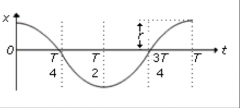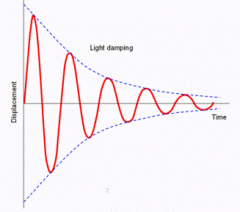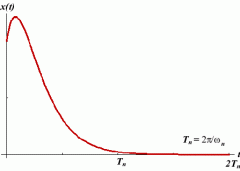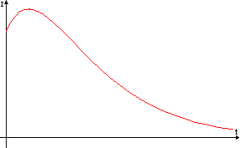![]()
![]()
![]()
Use LEFT and RIGHT arrow keys to navigate between flashcards;
Use UP and DOWN arrow keys to flip the card;
H to show hint;
A reads text to speech;
47 Cards in this Set
- Front
- Back
|
Newton's Second Law (in words)
|
Rate of change of momentum of an object is proportional to the resultant force acting on it
|
|
|
Newton's Second Law (equation)
|
F=m(v-u)/t
|
|
|
Impulse definition
|
Change in momentum
|
|
|
Units for momentum
|
kgms^-1 or Ns
|
|
|
Equations for impulse
|
Force x time
mv-mu |
|
|
Area under a force-time graph
|
Impulse
|
|
|
Newton's Third Law
|
Every action has an equal and opposite reaction
|
|
|
Principle of conservation of momentum
|
For a system of interacting object, the total momentum remains constant provided no external resultant forces act on the system.
|
|
|
Equation for conservation of momentum
|
m1u1+m2u2=m1v1+m2v2
|
|
|
Definition of a vector quantity
|
A quantity with direction and magnitude
|
|
|
Examples of a vector quantity
|
Velocity
Displacement Acceleration Momentum Force |
|
|
Definition of a scalar quantity
|
A quantity with magnitude
|
|
|
Examples of a scalar quantity
|
Distance
Speed Energy Mass |
|
|
Elastic collisions
|
Kinetic energy is conserved
|
|
|
Explosions
|
Total initial momentum = 0
Gain in kinetic energy comes from a source Objects moving apart |
|
|
Newton's First Law
|
An object remains at rest or in uniform motion unless acted on by a force
|
|
|
Graph of energy in simple harmonic motion
|

|
|
|
Graph of acceleration against displacement in simple harmonic motion
|

|
|
|
π radians
|
180°
|
|
|
Centripetal force
|
Acts towards centre of circle
At right angles to velocity Causes centripetal acceleration |
|
|
geostationary/geosynchronous orbits
|
T=24hrs
|
|
|
Satellites in orbit
|
Centripetal force = Gravitational force
|
|
|
Maximum speed in horizontal circular motion
|
v=√μgr
|
|
|
Maximum speed in circular motion at an angle
|
v=√grtanθ
|
|
|
Maximum speed in vertical circular motion
|
v=√gr
|
|
|
Simple harmonic motion definition
|
An oscillation inwhich the acceleration of an object is directly proportional to its displacement from the midpoint, and is directed towards the midpoint.
|
|
|
Phase difference
|
=2πΔt/T
|
|
|
Graph of displacement against time in simple harmonic motion
|

|
|
|
Graph of velocity against time in simple harmonic motion
|

|
|
|
Graph of acceleration against time in simple harmonic motion
|

|
|
|
Restoring forces of a mass on a spring
|
Tension
Gravity |
|
|
Restoring force of a pendulum
|
component of mg acting towards the equilibrium point
|
|
|
Free oscillation
|
No loss of energy due to external forces
|
|
|
Forced oscillations
|
Oscillations where energy is put into the system by a periodic external force and amplitude increases
|
|
|
Damped oscillation
|
the oscillations lose energy and amplitude decreases due to external forces
|
|
|
Graph of displacement against time of a lightly damped oscillation
|

|
|
|
Graph of displacement against time of a heavily damped oscillation
|

|
|
|
Graph of displacement against time of a critically damped oscillation
|

|
|
|
Graph of displacement against time of an over damped oscillation
|

|
|
|
Natural frequency
|
the frequency of free oscillations of an object moving with simple harmonic motion
|
|
|
Resonance
|
large amplitude oscillations caused when periodic force is applied at the same frequency as the natural frequency
|
|
|
Amplitude
|
the maximum displacement from equilibrium of an oscillating object
|
|
|
Angular displacement
|
the angle an object in circular motion turns through
|
|
|
Angular speed
|
the rate of change of angular displacement of an object in circular motion
|
|
|
Effect of changing the length on the time period of a pendulum
|
Proportional relationship
|
|
|
Effect of changing the maximum amplitude on the time period of a pendulum
|
No effect
|
|
|
Effect of changing the mass on the time period of a pendulum
|
No effect
|

